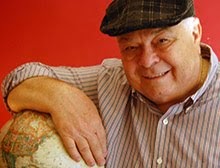 |
| Dusk at the Colosseum in Rome symbolizes the Eternal City (wikipedia) |
In Rome
 |
| Victor Emmanuelle Monument (Taylor) |
The Bettoja Hotel group features three properties that are among the oldest family owned hotel
groups in Italy
 |
| Piazza della Republicca is always busy (Wikipedia) |
Veteran travelers to Europe know all too well that room sizes are often
designed for Lilliputians rather than
American visitors with their highly developed fast food personas.
Consequently, Bettoja Hotels have adapted to a "large room" which
will accommodate up to four people or up to six with a connecting
configuration. With a 10% discount for any three night stay or up 25% for a
non-refundable or early booking (30 days in advance), it is not difficult to
see that a room for about $300 a night is a bargain when divided by several
couples.
 |
| Baths of Caracalla were once a gathering place (Taylor) |
In addition, each
Bettoja Hotel property is offering a free pass to guests to visit either the Scuderie del
Quirinale or the
Palazzo delle Esposizioni.
The very term alfresco or "outdoor dining"
was invented in Italy, and why not, for there is no better place in the world
to sit at a cafe or restaurant on the
street and simply watch the pageant that passes by. It is a cyclorama of
humanity and you can be part of it or be totally anonymous. It's your choice.
 |
| The world gathers at Piazza Navona (Wikipedia) |
As with
most major European cities, Rome
Colosseum, the Roman Forum, Piazza Venezia, Basilica of
Santa
Maria Maggiore and Piazza Della Repubblica are all with easy walking
distance of a Bettoja hotel.
 |
| Where gladiators once fought to the death inside the Colosseum (Wikipedia) |
The
Pantheon, Trevi Fountain, the Spanish Steps, Via Condotti and
Piazza Navona are
not much further for adventurous types, but taxis
are readily available for
less active visitors.
Shoppers
are always beguiled by Via Condiotti which is the Rodeo
Via dei Boschetto, Via dei Serpentini, Via Leonina and Vis
Panisperna
and their connecting side streets near the hotels.
 |
| Michelangelo's Pieta at St Peter's (Wikipedia) |
The
Monti District of Rome is
the largest district in the city.
Romans living in
the are are
justifiably proud of their heritage
and often claim to be
"more
genuinely Roman" than the
citizens of other areas of the
city.
Travelers
wishing to get a stunning view, particularly at night, can
have a drink or eat
dinner on the rooftop patio atop Hotel
Mediterraneo. Built by Mussolini, who
ignored all the codes of
construction, Mediterraneo is the tallest building on
the highest hill in
As
natives of Rome
Piedi) years ago in order to share
their knowledge and love of the
place they call home. Maps for the walking
tours can be obtained at the front desk of each hotel and they will guide you
through the Byzantine, Christian and Jewish sections of the city.
 |
| The Sistine Chapel is one of most awe inspiring attractions in Rome (Wikipedia) |
Two
tips: Be sure to go across the Tiber River to Trastevere to
explore the quaint quiet
streets of that part of Rome
often goes unnoticed and unvisited by travelers.
The
second is not to miss the museum at Villa Borghese. If you skip
it, you will
miss some of Bernini's finest work as a sculptor.
 |
| Massive St. Peter's Square looks toward Rome from above (Wikipedia) |
no better time to visit than spring. You see, as long as
spring remains
eternal, so, too, with the city of Rome
































